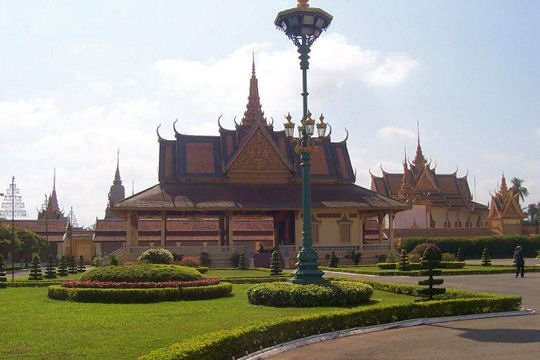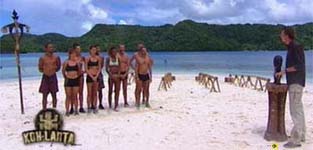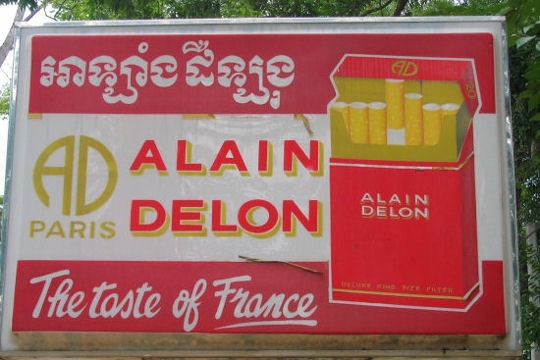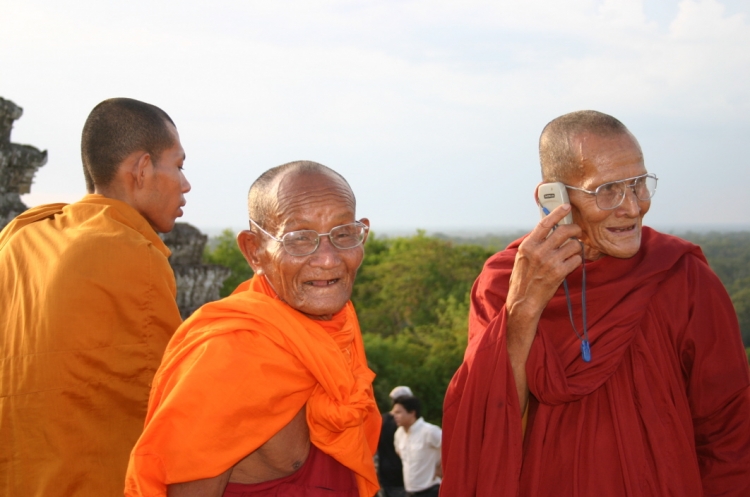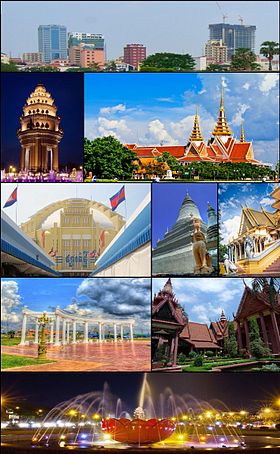|
|
|
||||
|
||||
|
| 150 after Jesus-Chris : Foundation of Funan, a rich and powerful state, located south of present-day Cambodia and the Mekong Delta. He will undergo the Indian infuence and extend its dominion over vassal states until the sixth century. | Construction of the Colosseum of Rome (first century AD) |
| 550 The Funan gives prominence to a former vassal, The Chen-la Chinese name that will remain to designate Cambodia until the thirteenth century. | Construction of Hagia Sophia in Constantinople (532-537) |
| 657-681 Reign of Jayavarman I | |
|
| 802-650 | Reign of Jayavarman II, who founded the Khmer kingdom | ||
| 877-889 | Reign of Indravarman Ier, The capital develops Roluos, fifteen kilometers from Angkor | ||
| 889-910 | Reign of Yasovarman Ier, who founded a new capital, Yasodharapura, Angkor future. Construction of Phnom Bakheng and Eastern Baray. | ||
| 941-944 | Conquest of Champa by the Khmer | ||
| 968-1001 | Reign of Jayavarman V, Construction of Phimeanakas, Ta Keo and Banteay Srei. | ||
| 1050-1066 | Reign of Udayadityavarman II, Construction: Baphuon Mebon and Western Baray. | ||
| 1113-1150 |
|
||
| 1177 | Invasion of Chams. They seized and sacked Angkor |
||
| 1181-1218 | Reign of Jayavarman VII After chasing the invaders and annexed the Champa, he create a new capital city at Angkor Thom, "the great Angkor". Constructions: Ta Prohm, Banteay Kdei, Bayon, Neak Pean, Srah Srang, Angkor Thom, Royal Plaza, Preah Khan, Ta Som. |
||
| Début XIVe siècle |
Succession of minor kingdoms. Decline of the Khmer Empire | ||
| 1352 | Taken Angkor by the Siamese, who plunder twice before leaving year 1431 |
|
|
| XVIIe siècle | Conquest of the Mekong Delta by the Annamese (Vietnamese), directed by Nguyen Hue. The strife of the royal family Khmer offer two powerful neighbors, Siam (Thailand) and Annam (Vietnam), multiple opportunities to intervene. |
Building of the Versailles castle (XVII Century) | ||||||||||
| 1794 | Siam's sovereignty over Battambang | |||||||||||
| 1841 | Annexation of Cambodia by the Annamese. | |||||||||||
| 1847-1860 | Reign of Ang Duong who, aided by the Siamese, took the capital, which is then Oudong | |||||||||||
| 1860 | King Norodom I, son of Ang Duong, signed a treaty placing Cambodia under the protection of France. It recognizes the sovereignty of Siam on all of western countries, including Battambang and Siem Reap | |||||||||||
| 1866 | Norodom moved the capital Phnom Penh. Start of construction of the present royal Palai. | |||||||||||
| 1887 | Creation of the Indochinese Union, which establishes a true direct administration of the French protectorate. | |||||||||||
| 1905 | Creation of the archaeological museum in Phnom Penh, a result of work initiated by the French School of extrêtme East. | |||||||||||
| 1907 | Siam restores three provinces in Cambodia, Battambang, Siem Reap and Sisophon Siem Reap (with Angkor). | |||||||||||
| 1908 | Jean Commaille (1868-1916) was appointed the first conservator of Angkor | |||||||||||
| 1916 | Henri Marchal (1876-1970) was appointed conservator of Angkor | |||||||||||
| 1931 | Scale reconstruction of the temple of Angkor Wat to the Paris International Exhibition. | |||||||||||
| 1941 | The representative of the Vichy regime established Norodom Sihanouk on the throne, aged eighteen. | |||||||||||
| 1953 |
|
|||||||||||
| 1949 | Signature of a Franco-Cambodian making Cambodia an independent state associated with the French Union. The Trate states that Cambodia does not waive its rights Conchincine (province of Cambodia, annexed by the Vietnamese, South Vietnam at present). | |||||||||||
| 1966 | Right, victorious in parliamentary elections, formed a government led by General Lon Nol, Sihanouk hostile. | |||||||||||
| 1968 | The communist party Khmer (Khmer Rouge) undertakes the struggle armée.Lon Nol, Sihanouk hostile. | |||||||||||
| 1969-1978 |
|
|||||||||||
| 1970 | General Lon Nol seized power during a trip to France and Sihanouk appealed to the United States. The king fled to Beijing and The Cambodia becomes a battlefield to the gates of vietnamese. In the maquis, the Khmer Rouge became, without anyone noticing, the first fighting force. |
|||||||||||
| 1975 | The Khmer Rouge enter Phnom Penh, applauded by the population. Forty-eight hours later, they empty the capital of all its inhabitants and send them to forced labor in rice fields. This is the beginning of four years of murderous madness. The Government of the Khmer Rouge imposed a totalitarian regime, backed by China, to eliminate the Khmer educated and symbols in the western world. |
|||||||||||
| 1975-1979 | The Pol Pot regime turns the country was renamed Democratic Kampuchea, a huge concentration camp. Nearly two million cambodiens (one in four people) will die a violent death, illness or malnutrition. 
 History : Pol Pot, and the atrocious Khmer Rouge regime History : Pol Pot, and the atrocious Khmer Rouge regime
|
|||||||||||
| 1979 | Invasion by Vietnam, Hanoi launched a hundred thousand soldiers on Cambodia. The hereditary enemies of the Khmer, install a regime in Phnom Penh in their pay, the Cambodian People's Party (CPP) as having responsibility Mr Heng Samrin, Chea Sim and Mr Mr Hun Sen. Boycotted by the international community. Cambodia is virtually cut off from the world until 1989. |
|||||||||||
| 1982 | King Norodom Sihanouk became head of a front anti-Vietnamese Khmer Rouge include | |||||||||||
| 1991 | Cambodia is under the UN supervision. | |||||||||||
| 10/1991 |
« Agreement concerning the Sovereignty, Independence, Territorial Integrity and Inviolability, Neutrality and National Unity of Cambodia » (in french)  CONFERENCE (Discussion) CONFERENCE (Discussion)
 CONFERENCE (Signature) CONFERENCE (Signature)
(in french) For more information |
|||||||||||
| 1993 |
|
|||||||||||
| 07/1997 | Murderer coup d'Etat of Party planned by the People's Revolutionary Party of Kampuchea (CPP) led by Mr Hun Sen, supported by the Socialist Republic of Vienam. Mr Hun Sen is comdamné by the international community. Prince Ranariddh was ousted first Prime Minister of the People's Revolutionary Party of Kampuchea (PPC). |
|||||||||||
| 08/1997 | The Thailand and Vietnam sign agreement to annex the territory of Cambodia and its maritime islands Wai Paulo, Paulo Panjang and Koh Tral, thus violating the Paris Peace Agreements of 1991. |
|||||||||||
| 1998 |
|
|||||||||||
| 2003 | ||||||||||||
| 07/10/2000 | Abdication of King Norodom Sihanouk. |
|||||||||||
| 14/10/2004 | Accession of King Norodom Sihamoni (a son of King Norodom Sihanouk), the Council unanimously throne. | |||||||||||
| 10/10/2005 | ||||||||||||
| 15/07/2008 | ||||||||||||
| 17/02/2010 | The first trial in history against a former Khmer Rouge leaders began in Phnom Penh. Thirty years after the fact,, Many former members of the scheme hold important positions in the administration of the country. Analysts believe they might want to hinder the investigation and court activities. |
|||||||||||
| 03/02/2012 | Mr Kaing Guek Eav, said Duch, former director of the detention center S21 in Phnom Penh, was sentenced on appeal to the decision for life for crimes against humanity, grave breaches of the Geneva Conventions, homicide and torture. |
|||||||||||
| No wa days |
|
|||||||||||
| Copyright © www.angkorvat.com |





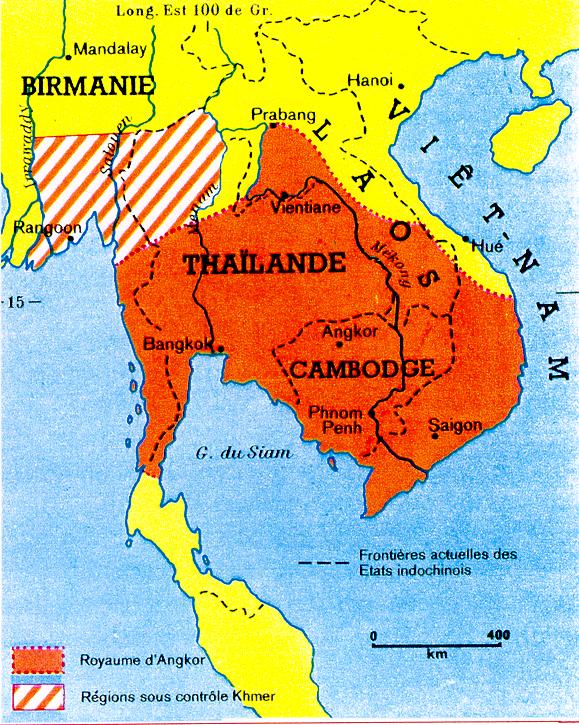

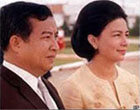 King Sihanouk led the crusade for independence. It was proclaimed on November 9, she will be confirmed by the Geneva Accords in 1954.
King Sihanouk led the crusade for independence. It was proclaimed on November 9, she will be confirmed by the Geneva Accords in 1954.
